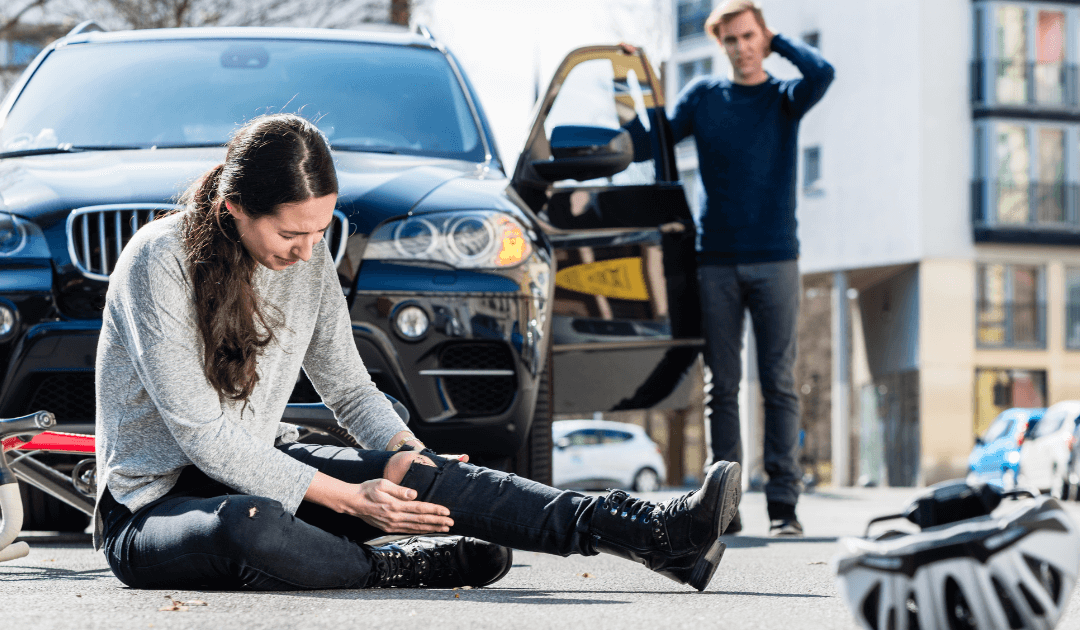Bicycle Accident?
Whether for fitness, enjoying the great outdoors, or to save fuel costs during a work commute, there are more people riding bicycles in Massachusetts than ever before. However, sharing the road with multi-ton vehicles, construction, and bad pavement adds a dangerous element to the experience and cause bicycle accidents.
The city of Boston even identified several “crash clusters,” areas that are particularly dangerous to a bicyclist, in its 2016 Vision Zero Boston review.
Statistics for Bicycle Accidents in Massachusetts
According to a National Highway Traffic Safety Administration (NHSC) report, bicycle accidents rose by 12 percent in just one year. Fortunately, the rate of injuries decreased during that same period by 10 percent. This can be attributed to more awareness by bikers and drivers, better safety equipment, and a commitment by municipalities to create safer biking areas.
However, that didn’t help cyclists on the Minuteman Rail Trail, one of Lexington’s busiest mixed-use nature trails.
Who’s at Risk?
The majority of crashes, (70 percent), happened in urban areas, on roadsides outside of intersections (61 percent), and involved collisions between a car and the cyclist (96 percent). There was no discernible difference in the time of day crashes occurred; you’re just as vulnerable during the day as while riding at night.
Who’s most at-risk for death or injury? Older, male cyclists riding in urban areas. The average age of
fatalities was between 41 and 45, and more than 90 percent of victims were male.
What to Do If You’ve Been in a Bicycle Crash?
Although bicycle accidents account for about 2.3 percent of all traffic fatalities, people are more likely to suffer an injury than to die in a collision. The most common personal injuries are head injuries, followed by broken bones.
If you’ve been in a bicycle crash, there are a few things you should do. Some of these suggestions depend on how badly you’re injured.
- Move off the road and to a safe place, if possible. If you’re severely injured, it’s best to stay put until first responders arrive.
- Get the other driver’s license, insurance, and personal information. as well as the names and contact info of any witnesses. If the accident was a hit and run, witness testimony will be essential. You can record this info as a note on your phone or message it to yourself.
- Take a photo of the car, license plate, your bike, and the accident scene, if possible.
- Don’t get involved in negotiations with the driver. They will be shocked and sorry and may promise any number of things. This often changes later. Do all of your talking to the police when you make an accident report.
- Call the police or ask a bystander to do it for you.
- Get medical treatment for any injuries, and make copies of any treatments, diagnostics, and other information related to the accident.
- Write down all of the details of the accident that you can remember.
- Make an appointment with a personal injury lawyer near you.
Make sure to bring copies of:
- Medical treatment, diagnoses, and prescriptions
- Police reports
- Witness statements
- Photos of the car and accident scene, and your injuries
- Any correspondence from insurance companies
- An accounting of any time lost from work
- Medical and other bills incurred because of your injury or during your recovery
Safe Biking Rules to Live By
Bicycle accidents aren’t 100 percent preventable, but bikers and drivers can coexist by following a few safety rules.
For motorists:
- Look ahead for bicyclists when turning.
- Check before opening your vehicle door when parallel parking.
- Be on the lookout for cyclists when entering intersections, leaving parking lots, or backing out of driveways.
- Maintain a distance of at least 3 feet between you and a roadside cyclist.
For cyclists:
- Wear proper safety equipment, including a highway safety-approved helmet.
- Maintain a safe distance from cars.
- Be aware of people opening car doors or backing up.
- Cede that right of way to pedestrians at crosswalks or on biking trails.
- Use hand signals when turning or stopping
- Avoid using alcohol or drugs that could impair you, even prescriptions, before riding a bicycle.
- Avoid reckless behavior.
- Install headlights, taillights, and reflectors on your bike.
Have You Been Injured in a Bicycling Accident?
If you or someone you love was injured in a bicycling accident in Massachusetts, your first call should be to a qualified personal injury lawyer. We’ll evaluate your case for free and do our best to win you the compensation you deserve for your pain and suffering.
Content Updated: Originally published July 09, 2019

